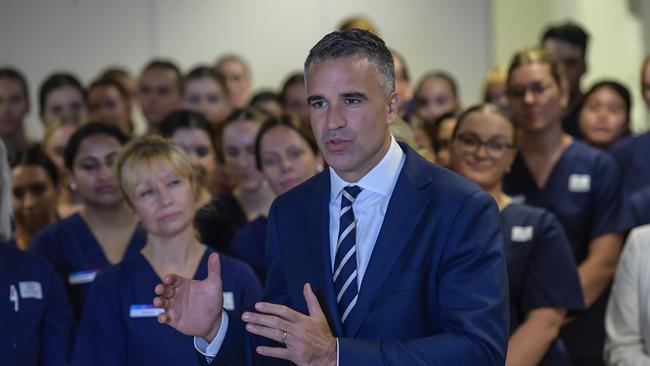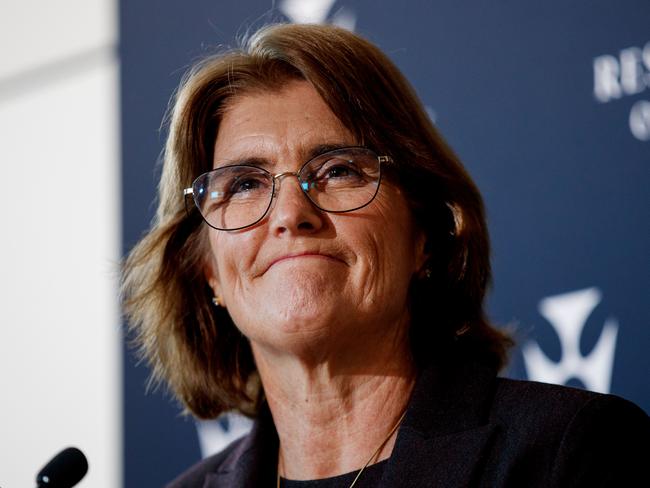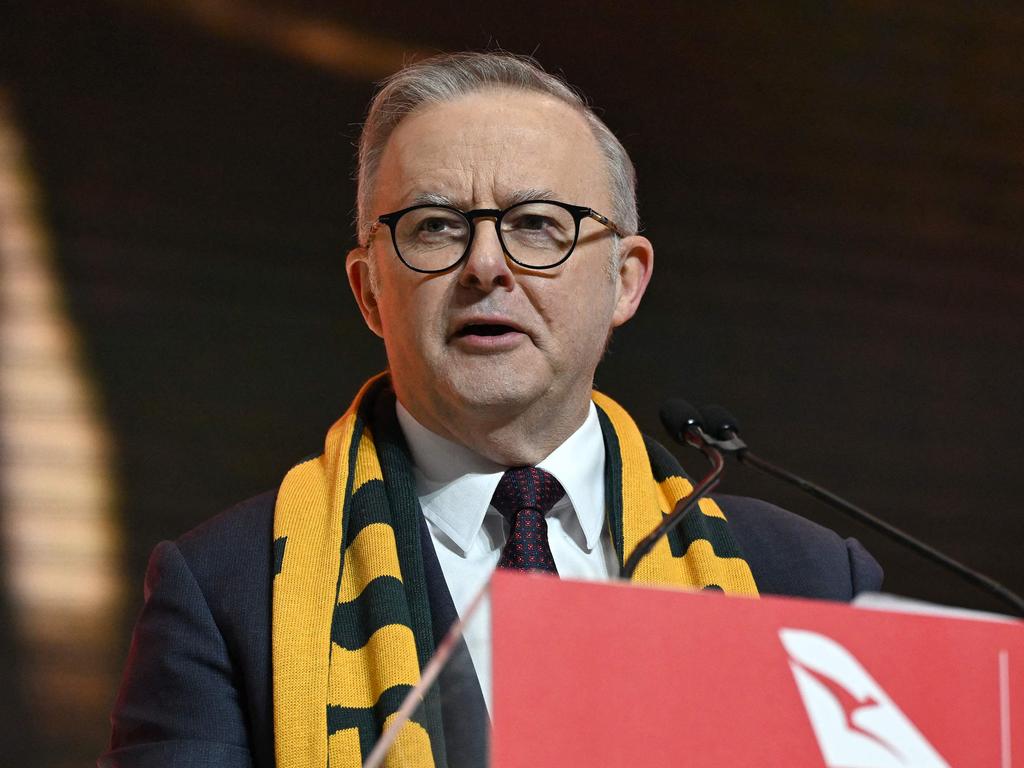How many jobs will be lost on the ‘narrow path’ to avoiding a recession?
Before she became a maestro at the podium, RBA governor Michele Bullock had an unfortunate excursion into messaging for the real world. She’s a quick learner – but questions remain.

In June last year the then Reserve Bank deputy governor gave a speech in Newcastle on achieving full employment. With the jobless rate then at 3.6 per cent (the May 2023 reading), the career economist presented the textbook trade-off between inflation and employment, explaining an unemployment rate of 4.5 per cent would be required to get inflation (then 7 per cent) down to the central bank’s 2-3 per cent target band.
“The unemployment rate will have to rise,” she said before talking about how the jobless rate in the run-up to the pandemic was above the so-called “non-accelerating inflation rate of unemployment”, a technocrat’s gauge for spare capacity in the economy.
Reporters quickly did some crude calculations: about 140,000 people would have to lose their jobs over 18 months to get inflation down. Organised labour went into meltdown. Bullock’s comments were slammed as “shameful” by union officials.
“Why do you want to inflict pain on yourself by saying it’s got to rise to 4.5 per cent?” union legend Bill Kelty told this newspaper. The former RBA board member said it seemed the RBA had “fallen in love with the idea that full employment is 4.5 per cent, and that that’s when wages start to increase inflation”.

“I’m not at all sure that you can’t run an economy with an unemployment rate of under 4.5 per cent,” Kelty said.
“It depends on the rate of migration, on the rate of growth in the economy, on the rate of productivity and commodity prices. It could be 2.5 per cent or 3, or 3.5 or 4. It depends on all of those factors. There’s no magic number.”
The new head of the central bank is a quick learner about the public domain and navigating politics. But questions remain. Is the next cash rate move by the RBA board up or down? How high will the unemployment rate rise in an election year? How many people are likely to lose their jobs on Bullock’s “narrow path” to avoiding a recession?
In net terms, if the central bank’s forecasts are correct, the answer may be zero. Of course, some people will lose their jobs; the labour market is in constant motion, hiring and firing continue apace. This week Bank of Queensland and CSIRO announced job cuts, while universities are warning of lay-offs if the Albanese government goes ahead with foreign student caps.
Following the reopening of the border to students, workers and tourists (in stages from November 2021 and February 2022), massive growth in the working-age population and rising participation have been key drivers of employment. It’s remarkable that even with boom levels of migration, the ratio of people in work to the working-age population has been at a record high of 64 per cent for two years.
In the two years before the pandemic, that ratio was 62 per cent. The difference may seem negligible but it translates into 450,000 more people in work than if employment had simply matched growth in the population aged 15 to 64.
Since Bullock’s brush with magic numbers, the number of people in the labour force (working or looking for work) has grown by 550,000, mainly because of migration. The economy has pumped out 450,000 more jobs. The headline unemployment rate has crept up from its near 50-year low to 4.2 per cent last month. By the middle of next year, the RBA expects the jobless rate to peak at 4.4 per cent (and stay there until the end of its forecast horizon in December 2026).
As the central bank governor noted a fortnight ago, after the pandemic unemployment rates dropped to very low levels across the country, especially in “commutable” regional areas that are less than 150km from a capital city GPO, possibly because of an increase in remote and hybrid workers.
“Since then, regional labour markets have been tighter than those in capital cities,” Bullock told the Armidale Rotary Club, noting the unemployment rate in NSW’s New England North West region had averaged 2.5 per cent since the beginning of last year, compared with an average of around 6 per cent across the past 20 years. The average capital city jobless rate is around 4.3 per cent, compared with 3.5 per cent for regional Australia.
After last week’s labour force figures were published, Westpac economist Ryan Wells noted that a lift in the unemployment rate due to the participation rate surging to a fresh high of 67.1 per cent was less concerning than if it had been due to employers firing workers. Experiences across the economy are varied, with retail, manufacturing and construction jobs under pressure.
“Overall, these results speak to labour market resilience rather than weakness – a welcome signal for policymakers that have been desperately trying to orchestrate a ‘soft landing’ for the economy,” Wells wrote.
Yet virtually all of the new jobs are in the largely taxpayer-funded “care sector” – especially in disability services, but also aged care and childcare, health and education – and public administration. The “non-market” sector now accounts for 31 per cent of overall employment; a decade ago it was 25 per cent. Employment growth in the private sector has stalled.
While employment is a lagging indicator, Deloitte Access Economics partner David Rumbens says “if you look closely enough you can see evidence of a weak economy finally bleeding through to the labour market”.
“The private sector engine room of the economy has been sitting idle for a while,” Rumbens writes in the consultancy’s latest Employment Forecasts.
Job vacancies are down by one-quarter over the past two years, as is the share of workers switching jobs. The number of average hours worked per person is drifting down, suggesting that with skill shortages front of mind, employers are cutting back on hours rather than letting people go. More workers than ever – one in 15 – are working more than one job. “Although some of these workers have likely taken up a second job to boost their financial position, most have likely done so out of necessity as their primary job isn’t providing enough hours (and hence income) to make ends meet as cost of living pressures continue to bite,” the Deloitte report says.
During the past six months, employment has grown by almost 51,000 a month, which ANZ economists say is at odds with the financial market charge for a cut in interest rates this year.
But they also point out “employment growth can turn quickly, even outside recessions”. They cite three cases this century (in 2000, 2003 and 2010) where employment growth was robust and then six months later jobs were being wiped out.
Naturally, the RBA board is watching the labour market closely. It is expecting a gradual easing with the unemployment rate ticking up slightly, and just above its 4.3 per cent estimate of full employment. That would be “consistent with the anticipated mildness of the downturn”, according to minutes released this week from its board meeting earlier this month.
But the central bank’s economists have also prepared a scenario in which the unemployment rate picks up more sharply, as had been the case in peer economies, such as Canada and New Zealand, which would mean inflation gets back to target sooner than expected.
That would come about if employers were “hoarding” labour, meaning an excess of staff. “While the evidence that this was occurring seemed limited, members were alert to the possibility that labour demand could soften, perhaps quite rapidly,” the RBA minutes said.
That’s something the monetary authorities and Treasury officials want to avoid at all costs. They may talk tough from time to time, and frequently insist they have hard heads. But their collective approach to the RBA’s so-called dual mandate of low inflation and full employment, suggests they treat the nation’s welfare, in the broadest sense, as best served by preserving the spectacular post-pandemic gains in employment. Soft hearts.
Policymakers have been in the frame for creating the inflation scourge through cheap money and loose budgeting. Canberra spent too much in dealing with the Covid-19 economic and health crises, while the RBA cut the cash rate to 0.1 per cent and then was too slow to read the room on inflation. Jobs, whichever way you cut the how and who, are their collective achievement and salvation.
More people than expected could lose their jobs if consumer demand does not recover and GDP growth is weaker. Or if the gap between supply and demand is greater than the RBA estimates, and inflation is more persistent, and the board opts for a 14th hike in the cash rate. Or if, as many market economists believe, subdued growth forces companies to reduce their labour hoarding. Or if the cuts to hours and new hiring, which are easing demand), have run their course.
After 3.1 per cent employment growth last financial year, Deloitte expects it to fall to 1 per cent this year. Outside of the pandemic that’s the weakest expansion since the end of the mining boom in 2013-14. Only one-third of Australian chief financial officers surveyed expect to increase their workforce in the next 12 months.
“The slowdown in employment growth is expected to be felt the hardest in the market sector of the economy as businesses are cautious about increasing headcount while economic activity is still fragile,” Rumbens writes, adding an extra 100,000 people are expected to join the ranks of the unemployed this year.
Competition for jobs will soon be more intense than we’ve seen in years. But with Canberra and provincial governments still running expansionary budgets, taxpayers will be funding another chunky rise in health, education and administration workers.
As we all should know by now without the conductor’s help, the public sector and its highly prized services are not the main game for growing the pie.







Before she became a maestro at the podium, Michele Bullock had an unfortunate excursion into messaging for the real world.